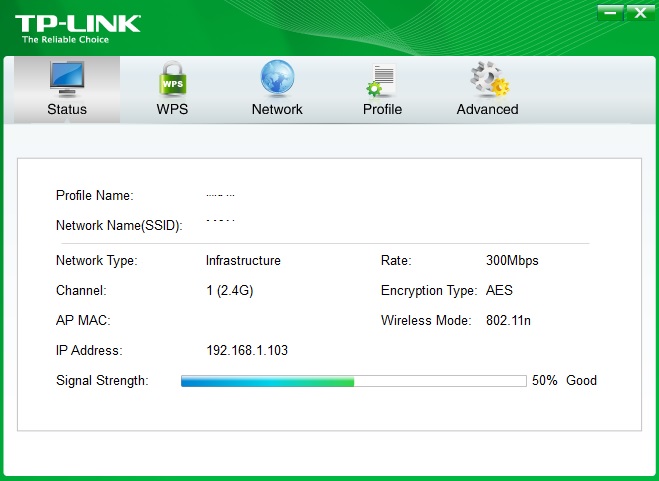Tp-link Wireless Configuration Utility Driver
Upon being installed, the software adds a Windows Service which is designed to run continuously in the background. Manually stopping the service has been seen to cause the program to stop functing properly.
TP-LINK Drivers Download by TP-LINK. A faster and easier option is to use the TP-LINK Driver Update Utility to scan. TP LINK 300Mbps Wireless N Adapter Driver.
It adds a background controller service that is set to automatically run. Delaying the start of this service is possible through the service manager.


A scheduled task is added to Windows Task Scheduler in order to launch the program at various scheduled times (the schedule varies depending on the version). The software is designed to connect to the Internet and adds a Windows Firewall exception in order to do so without being interfered with. The setup package generally installs about 16 files and is usually about 7.86 MB (8,236,879 bytes). Program details. Or, you can uninstall TP-LINK Wireless Client Utility and Driver from your computer by using the Add/Remove Program feature in the Window's Control Panel.
On the Start menu (for Windows 8, right-click the screen's bottom-left corner), click Control Panel, and then, under Programs, do one of the following:. Windows Vista/7/8: Click Uninstall a Program. Windows XP: Click Add or Remove Programs. When you find the program TP-LINK Wireless Client Utility and Driver, click it, and then do one of the following:.
Windows Vista/7/8: Click Uninstall. Windows XP: Click the Remove or Change/Remove tab (to the right of the program). Follow the prompts.
A progress bar shows you how long it will take to remove TP-LINK Wireless Client Utility and Driver. Free lottery wheel generator.
The most common release is 1.3.1, with over 98% of all installations currently using this version. During setup, the program creates a startup registration point in Windows in order to automatically start when any user boots the PC.
Upon being installed, the software adds a Windows Service which is designed to run continuously in the background. Manually stopping the service has been seen to cause the program to stop functing properly. It adds a background controller service that is set to automatically run. Delaying the start of this service is possible through the service manager. A scheduled task is added to Windows Task Scheduler in order to launch the program at various scheduled times (the schedule varies depending on the version). The software is designed to connect to the Internet and adds a Windows Firewall exception in order to do so without being interfered with. The primary executable is named TWCU.exe.
The setup package generally installs about 33 files and is usually about 1.9 MB (1,996,280 bytes). Program details. Additional files:. WJRa.dll. RaWLAPI.dll - RaWLAPI Dynamic Link Library (RaWLAPI DLL). RtlLib.dll (by Realtek Semiconductor) - RtlLib Dynamic Link Library (RtlLib DLL(IHV)).
IcsManager.exe - IcsManager Application (ICS(Internet Connection Sharing) Management Application). libeay32.dll (by The OpenSSL Project, - The OpenSSL Toolkit (OpenSSL Shared Library).
RTLDHCP.exe (by Realtek). IpLib.dll (by Realtek) - IpLib.
RtlIhvOid.dll - IHV OID (IHV OID DLL (WiFi Direct)). WJRtl.dll - WJetRtl. DCWFF.dll. nicLan.dll. TWCU.exe Behaviors exhibited. Or, you can uninstall TP-LINK Wireless Configuration Utility from your computer by using the Add/Remove Program feature in the Window's Control Panel. On the Start menu (for Windows 8, right-click the screen's bottom-left corner), click Control Panel, and then, under Programs, do one of the following:.
Windows Vista/7/8: Click Uninstall a Program. Windows XP: Click Add or Remove Programs.
Wireless Zero Configuration Utility
When you find the program TP-LINK Wireless Configuration Utility, click it, and then do one of the following:. Windows Vista/7/8: Click Uninstall. Windows XP: Click the Remove or Change/Remove tab (to the right of the program). Follow the prompts. A progress bar shows you how long it will take to remove TP-LINK Wireless Configuration Utility.